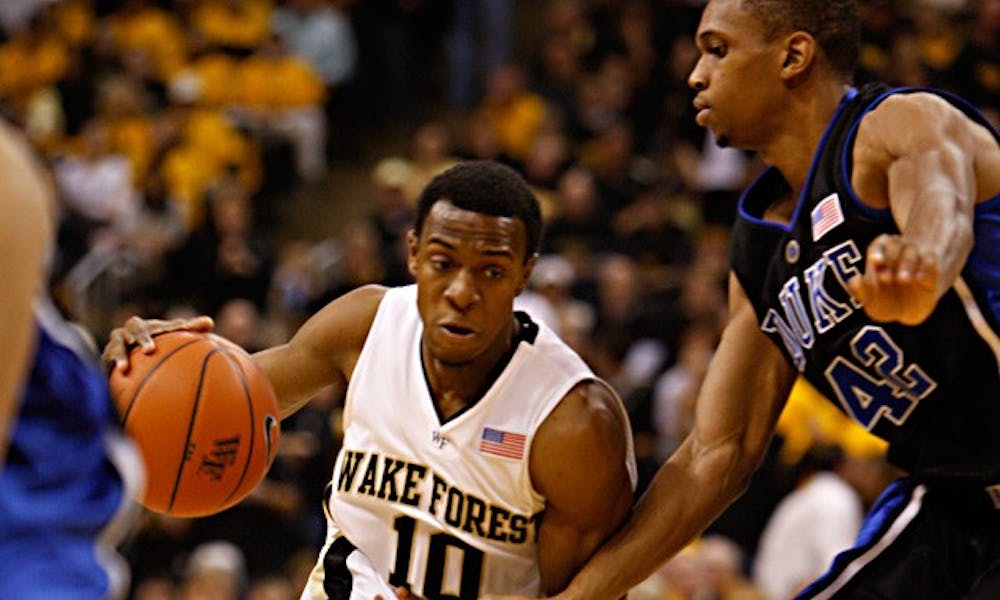With ACC play more than halfway in the books, it is a good chance to take a step back and look at that the way things have unfolded from a more removed perspective. While certain developments—such as North Carolina struggling near the bottom of the conference—will catch the casual observer’s eye, a bigger development is the level of parity that has taken hold of the league.
Early in February last year, there were four ACC teams—North Carolina, Duke, Wake Forest and Clemson—all jockeying for position within the top 10 of the Associated Press Top 25 poll. However, no other conference team appeared in the rankings, not even in the “Others Receiving Votes” category.
Comparatively speaking, a drastic transformation has taken place this year. In the rankings that came out at the beginning of this week, just two teams made appearances in the Top 25. Duke, the conference frontrunner, moved up a spot to No. 6. And Wake Forest, a team that has surged as of late and moved back into second place in the league, checks in at No. 23.
Many within the conference look at the standings and recognize a great deal of parity. That view does hold more than a nugget of truth as evidenced by cellar-dwellar N.C. State, which is 2-9 in the ACC, upsetting 9-2 Duke, and fellow lightweight Miami beating then-No. 20 Georgia Tech.
“I do believe there is not as much of a gap between one and 12 as there has been in the past,” Florida State head coach Leonard Hamilton told FanHouse.com. “People have identified the ACC because of the success Marlyand, North Carolina, Duke and even Wake Forest has had. Programs like Florida State, Clemson and now Virginia and Virginia Tech, Boston College, Miami, we’re able to attract better players.”
The changing landscape within the conference can be attributed to the early departure of so many talented players to the NBA Draft. Many ACC teams have struggled to replace first-round talent; for example, North Carolina was especially dominant last year when future pros Tyler Hansborough, Ty Lawson and Wayne Ellington returned for another season before heading to the NBA, but has not been able to reload this year.
The even distribution of talent in the conference leads to the impression that the ACC is as competitive as ever, though clearly there are many different methods by which the success of a conference can be measured. Interestingly, the Sagarin computer ratings rank the ACC as the nation’s top conference, just ahead of the Big 12 and Big East, a mega-league with four teams currently in the top 10.
Other methods of comparing conferences help to provide a fuller understanding. In the Big Ten/ACC Challenge that was completed earlier this year, the Big Ten went 6-5 against its ACC opponents, the first time the Big Ten—often viewed as an inferior conference—beat the ACC in the competition. And while Joe Lunardi of ESPN.com currently predicts that seven ACC teams will get NCAA tournament berths, tied for most of any conference, most experts would be shocked if more than one of those teams reached the Elite 8, while several other conferences could end up with a pair of Final Four teams.
However, that is what will make the rest of the season worth watching, as fans will always be able to promote the merits of their conference in anticipation of March Madness. Even then, sometimes the Tournament offers inconclusive answers and the incessant arguments roll over into the offseason.
Get The Chronicle straight to your inbox
Signup for our weekly newsletter. Cancel at any time.

